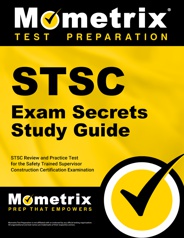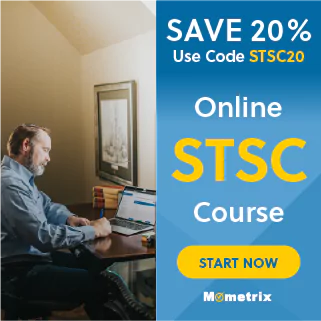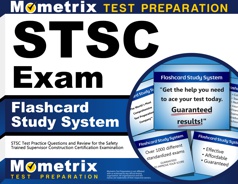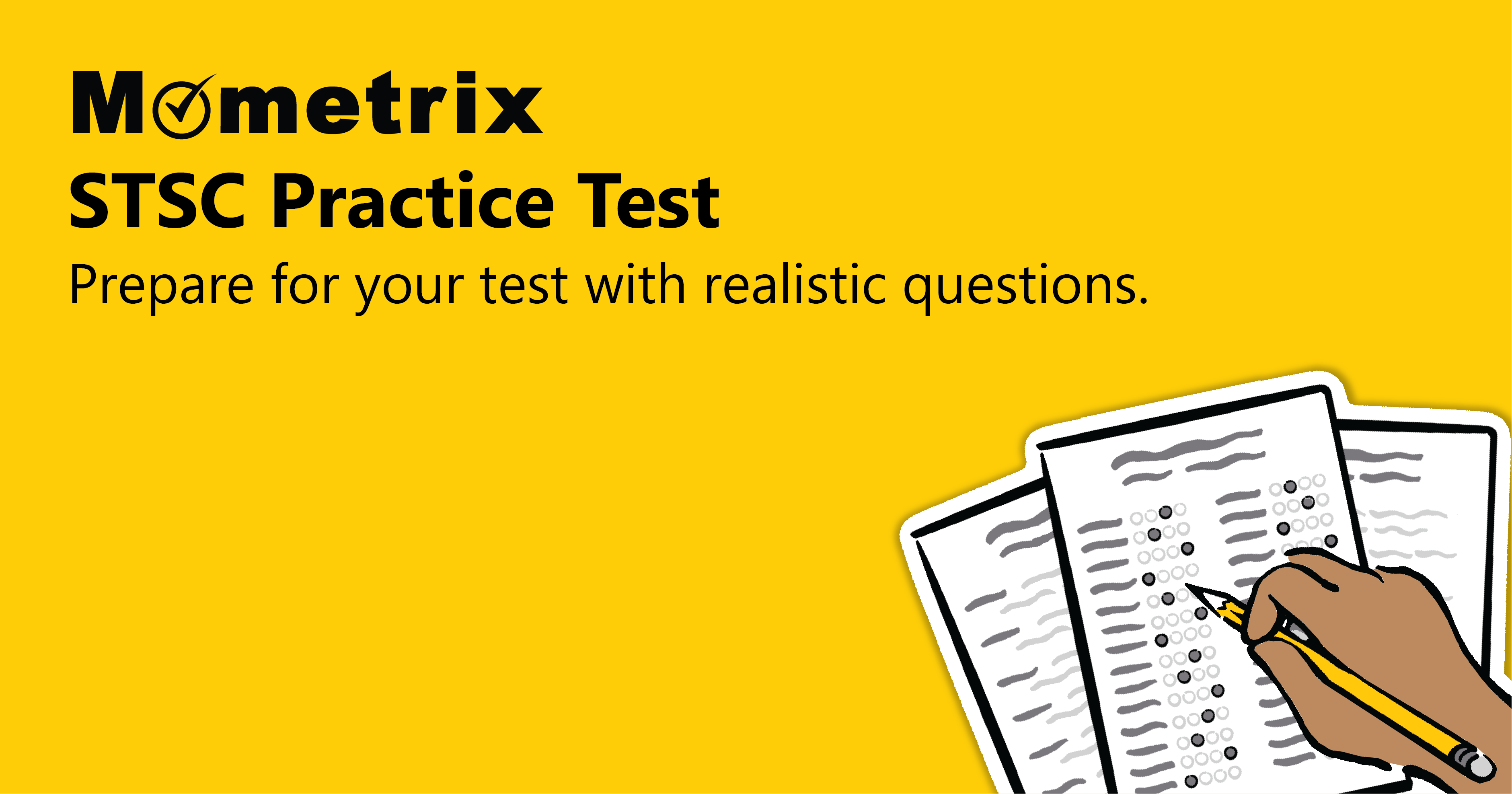The Board of Certified Safety Professionals (BCSP) administers the Safety Trained Supervisor Construction® (STSC®) certification exam for organization leaders to help ensure safer and healthier workplaces.
Click “Start Test” above to take a free STSC practice test!
Eligibility
To be eligible for the exam, you must have at least 30 hours of safety, health, and environmental training. You must also meet at least ONE of the following requirements:
- Have at least two years of supervisory experience
- Have at least four years of construction-related work experience
- Have at least an associate degree in occupational safety, construction management, or risk management
- Complete a two-year union or trade training program or apprenticeship
STSC Exam Outline
The STSC exam contains 100 multiple-choice questions and has a time limit of 2 hours.
The exam is split into five content domains, and the questions in each domain are split into two categories: Skills and Knowledge. All domains contain Knowledge questions, and two domains contain additional skills questions.
1. Safety Program Implementation and Management (23.9%)
The Knowledge questions in this domain evaluate the following:
- Permit-required work tasks
- Incident investigation processes and documentation
- Established environmental, safety, and health programs
- Appropriate respiratory protection
- Hazards that need to be communicated
- Who to contact for determination of appropriate controls
- Workplace sanitation/hygiene requirements
- Conducting a job/task hazard analysis
- When issues should be elevated through the appropriate chain-of-command
The Skills questions in this domain test your ability to do the following:
- Evaluating required qualifications, training, and/or certifications
- Identifying and evaluating whether a worker is fit for duty
- Identifying safe and unsafe workplace behaviors
- Conducting safety inspections and audits
- Mitigating hazards or risks
- Implementing corrective actions
- Implementing appropriate controls for job-site hazards
2. Hazard Identification and Control (28.5%)
The Knowledge questions in this domain evaluate hazards associated with the following:
- Hot work hazards and controls
- Electrical hazards and controls
- Excavation hazards and controls
- Confined space hazards and controls
- Hazardous energy and control methods
- Work zone hazards and controls
- Material handling hazards and controls
- Struck by/caught between hazards and controls
- Pinch point hazards and controls
- Spill response and controls
- Proper use, care, maintenance, and limitations of personal protective equipment (PPE)
- Hazards and controls associated with working at heights
- Walking/working surfaces hazards and controls
- Housekeeping hazards and controls
- Hand and power tools hazards and controls
- Heavy equipment hazards and controls
- Crane hazards and controls
- Hazards and controls associated with hoisting, rigging, and signaling
- The hierarchy of controls
The Skills questions in this domain test your ability to do the following:
- Identify risks or hazards associated with the site layout
- Select appropriate personal protective equipment (PPE) for potential job task hazards
3. Health Hazards and Basic Industrial Hygiene (17.8%)
The Knowledge questions in this domain evaluate the following:
- Ergonomic hazards and controls
- Work conditions that could create thermal stress
- Hearing protection
- Chemical hazards and controls
The Skills questions in this domain test your ability to do the following:
- Recognize ergonomic hazards on the worksite
- Recognize signs and symptoms associated with thermal stress
- Identify job task health hazards associated with routes of entry/exposure
- Identify correct implementation of health hazard controls
4. Emergency Preparedness and Management (16.6%)
The Knowledge questions in this domain evaluate the following:
- Proper use, access, and inspections of fire prevention and protection methods
- Potential fire hazards and controls
- Emergency response plans and drills
- Required emergency response equipment for worksite hazards
- Medical emergency response
The Skills questions in this domain test your ability to identify correct fire extinguishing methods for worksite hazards.
5. Leadership and Ethics (13.2%)
The Knowledge and Skills questions in this domain evaluate the following:
- Professional and organizational ethics
- BCSP Code of Ethics: Principles
Check Out Mometrix's STSC Study Guide
Get practice questions, video tutorials, and detailed study lessons
Get Your Study Guide
Registration
To register for the STSC exam, you must first create an online BCSP account. Through your account, you can then select “STSC” as your certification of choice and fill out the application. You will be asked to provide your contact information, proof of your BSCP-qualified credential, and your experience and education information.
Once the application is filled out, you will need to submit it along with the $120 application fee.
Once your application is approved, you will have a full year from the date of approval to register and sit for the exam. During registration, you will need to pay the $185 examination fee. You can schedule your exam at any time with Pearson VUE.
Test Day
You should arrive at the Pearson VUE testing center 15-30 minutes before the exam is scheduled to begin. Once you arrive, you must sign in and present your photo ID to the proctor. You will be photographed and asked to sign a roster and other rule forms.
Personal items are not allowed in the testing room, so they should be left at home or in your car. This includes all electrical devices, bags, books, notes, wallets, hats, and accessories.
Just before the exam starts, you will be given a brief tutorial on the testing system. You will also be given everything you need to work out any calculations by hand (no calculator will be provided).
How the Test is Scored
BCSP uses the modified-Angoff method and the Bookmark Standard Setting method to establish the scores for the STSC exam. These methods are used to ensure that your score is based entirely on your testing performance and does not rely on how well other test-takers performed.
You will get your results immediately after completing the exam. As long as you achieve the minimum cumulative score for the entire test, you will have passed, even if you did not pass all five domains individually.
Even though you don’t need to pass each individual domain, your score report will show you how you performed on each one. This is useful for understanding your strengths and weaknesses, especially if you did not pass and need to retake the exam. Currently, the minimum passing score is 70%.

STSC Online Prep Course
If you want to be fully prepared, Mometrix offers an online STSC prep course designed to give you everything you need to succeed!
Here’s what you’ll find in the STSC course:
Everyone learns differently, so we’ve tailored the STSC online prep course to ensure every learner has what they need to prepare for the STSC exam.
Click below to check it out!
Check Out Mometrix's STSC Flashcards
Get complex subjects broken down into easily understandable concepts
Get Your Flashcards
FAQs
Q
How many questions are on the STSC exam?
A
There are 100 multiple-choice questions on the exam.
Q
How long is the STSC exam?
A
The time limit for the exam is 2 hours.
Q
What is the passing score for the STSC exam?
A
To pass the exam, you must answer at least 70% of the questions correctly.
Q
How much does the STSC exam cost?
A
The examination fee is $185, and there is an application fee of $120.
Mometrix Test Preparation is not affiliated with or endorsed by any official testing organization. All organizational and test names are trademarks of their respective owners.




